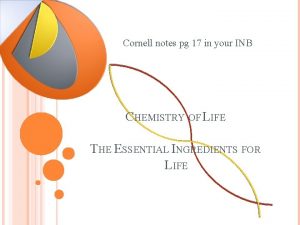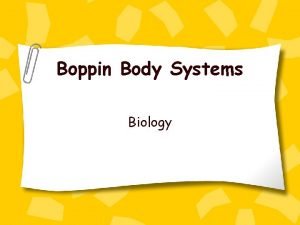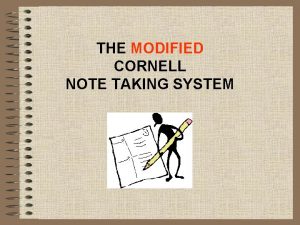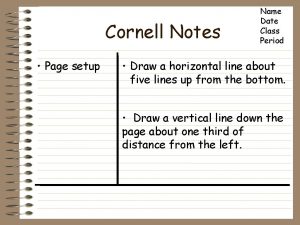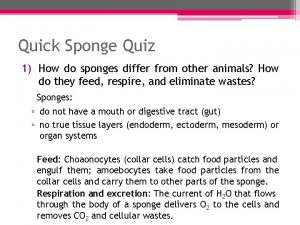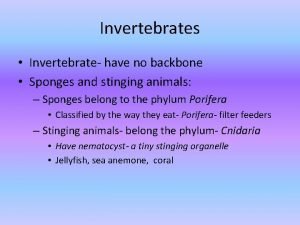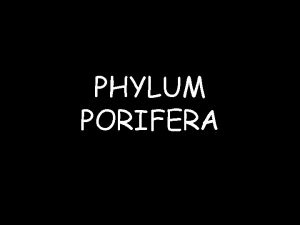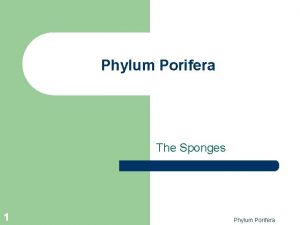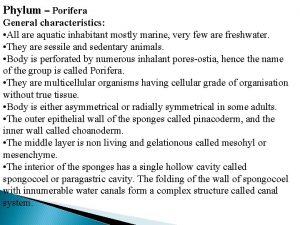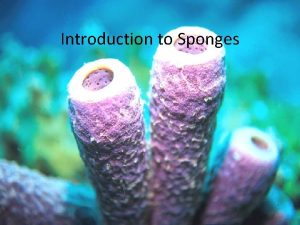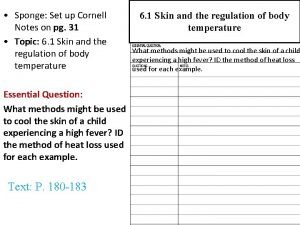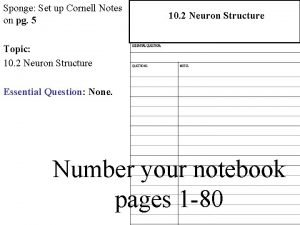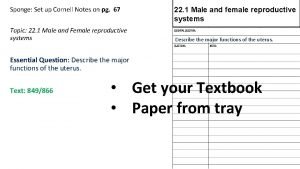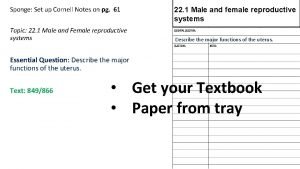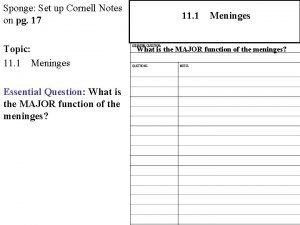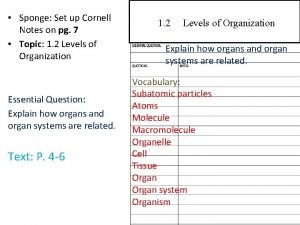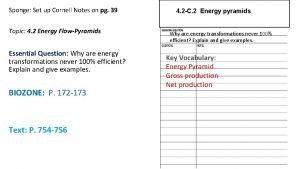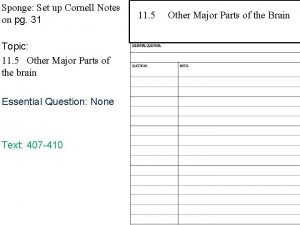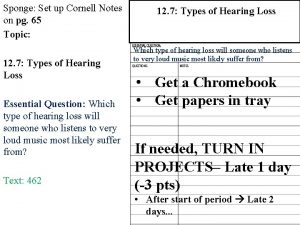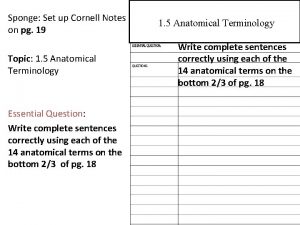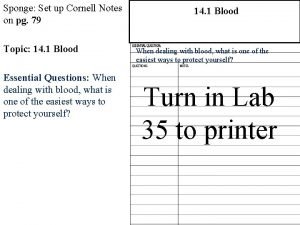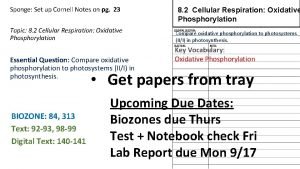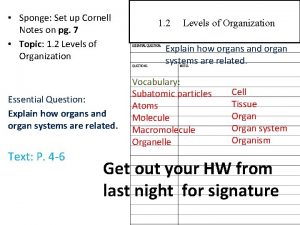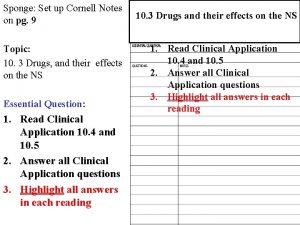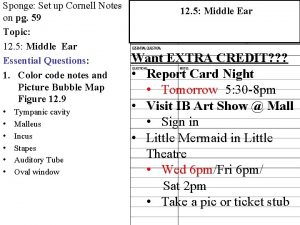Sponge Set up Cornell Notes on pg 93






















































- Slides: 54

Sponge: Set up Cornell Notes on pg. 93 Topic: 6. 6 Reproduction- Male and Female reproductive systems Essential Question: Write the functions of each of the parts of the male/female reproductive system (in pictures) BIOZONE: 342 -343 6. 6 Reproduction- Male and female reproductive systems Write the functions of each of the parts of the male/female reproductive system (in pictures) Key Vocabulary: Male: seminal vesicle prostate gland vas deferens epididymis testis scrotum Female: Ovary Fallopian tube Uterus Vagina Cervix

Human Reproduction Everything comes down to a male gamete (sperm) fertilizing a female gamete (egg or ovum) • Ensures ½ genetic makeup of the resulting zygote comes from each parent • Ensures genetic variation in the human species

Human Reproduction Hormones play a key role

Human Reproduction Development of sexual dimorphism • Different body forms of males and females

Assessment Statements • 6. 6. 4 List three roles of testosterone in males

Human Reproduction Regulation of sexual physiology • Ex: testosterone in males • Determines the development of male genitalia during embryonic development • Ensures development of secondary sex characteristics during puberty (facial hair etc. ) • Maintains the sex drive of males throughout their lifetime

The Male and Female Reproductive Systems • The structures of the male and female reproductive systems are adapted for the production and release of the gametes

The Male and Female Reproductive Systems The female reproductive system: • Ensures a suitable location for fertilization • Provides an environment for the growth of the embryo then fetus until birth

Assessment Statements • 6. 6. 1 Draw and label diagrams of the adult male and female reproductive systems

Male Reproductive System Label the male reproductive system- write a short description of the function of each part p. 536 -539 in text

Male Reproductive System Urinary bladder Seminal vesicle Vas deferens Prostate gland Urethra anus epididymis Erectile tissue of penis scrotum Testis

Urinary bladder- collects urine Vas deferens- transports sperm from epididymis Urethra- tube connected to bladder for excretion of urine and semen Erectile tissue- tissue with vascular spaces to be engorged with blood for erection Seminal vesicle- gland that makes most content (70%) of semen Prostate gland- that secretes milky white fluid that makes up 30% of semen Anus- opening at which solid waste is excreted Epididymis- tube that carries sperm from testes to vas deferens Scrotum- sack of skin that contains the testes, epididymis and part of the vas deferens Testis- (plural testes- or testicles) produces sperm and male hormones

Female Reproductive System plus bladder Label the female reproductive system- write a short description of the function of each part p. 536 -539 in text

Female Reproductive System plus bladder Oviduct aka Fallopian tube Ovary Cervix Vagina Uterus Urinary bladder Urethra Anus Vaginal opening

Cervix- lower part of the uterus, opens for childbirth Vagina- muscular tube leading from external genitals to cervix Anus- opening at which solid waste is excreted Oviduct (Fallopian Tubes)- the tube through which an ovum (egg) passes from an ovary Ovary- female reproductive organ in which eggs are produced Uterus- (womb) connects cervix and fallopian tubes- fetus develops here Urinary bladder- collects urine Urethra- tube connected to bladder for excretion Vaginal Opening- opening to vagina

Female Reproductive System (external/internal detail) aka fallopian tubes Label the female reproductive (inner lining of uterus) system- write a short description of the function of each part p. 536 -539 in text

Female Reproductive System (external/internal detail) Ovaries akaaka fallopian tubes Tubes Oviduct Fallopian Follicles Uterus Wall of uterus Endometrium Corpus Luteum (innerliningofofuterus) Cervix Vagina

Endometrium: blood-rich, inner mucous membrane of the uterus Corpus Luteum- temporary endocrine structure that secretes progesterone to make the uterus more suitable for implantation

Crash Course: Reproductive System (12 m 2 s) • https: //www. youtube. com/watch? v=_7 rs. H 2 lo. IY 8

Sponge: Set up Cornell Notes on pg. 95 Topic: 6. 6 Reproduction- Menstruation Essential Question: How do hormones play a key role in the menstrual cycle? BIOZONE: 344 6. 6 Reproduction- Menstruation How do hormones play a key role in the menstrual cycle? Key Vocabulary: Menstruation

Assessment Statements • 6. 6. 2 Outline the role of hormones in the menstrual cycle, including FSH (follicle stimulating hormone), LH (luteinizing hormone), oestrogen and progesterone

Menstrual Cycle • The menstrual cycle prepares the ovaries for ovulation and the uterus for implantation • Starts at puberty • On average, 28 day cycle • Purpose: to time the release of an egg or ovum (ovulation) for possible fertilization and later implantation into the inner lining of the uterus • This implantation MUST occur when the uterine inner lining (the endometrium) is rich with blood vessels • It will shed if no implantation occurs • This breakdown leads to menstrual bleeding • This is a sign no pregnancy occurred

Menstrual Cycle • The hypothalamus is the regulatory center of the menstrual cycle • Produces a hormone known as gonadotropin releasing hormone (Gn. RH) • The target tissue is the pituitary gland • Results in the production and secretion of two hormones into the bloodstream • Follicle stimulating hormone (FSH) • Luteinizing hormone (LH) • The target tissues for these hormones are the ovaries gland Ovaries Oestrogen Progesterone (after ovulation) Endometrium of uterus

Menstrual Cycle • FSH and LH have several effects on the ovaries • Increase the production/secretion of another reproductive hormone by the follicle cells of the ovary= estrogen • Estrogen enters the blood steam • Target tissue is the endometrium of the uterus • Results in an increase the blood vessels of the endometrium gland Ovaries Estrogen Progesterone (after ovulation) Endometrium of uterus

Menstrual Cycle

Menstrual Cycle • Another effect of FSH and LH is the production of structures within the ovaries known as Graafian follicles oocyte

Menstrual Cycle 1. Oocytes (immature eggs) are formed • Made up of follicle cells and true reproductive cells in the ovaries

Menstrual Cycle 1. 2. Graffian Follicles formed • Under chemical stimulation, the follicle cells and oocytes become Graffian follicles

Menstrual Cycle 3. Ovulation Occurs • A spike in the level of FSH and LH leads to ovulation • Release of oocyte from the Graafian follicle • Oocyte is accompanied by the inner ring of follicle cells • Typically enters the Fallopian tube soon after ovulation 3.

Menstrual Cycle 4. Corpus Luteum forms • • 4. The outer ring of follicle cells remains within the ovary and the cells of this ring divide to become the corpus luteum This will produce progesterone for 10 -12 days after ovulation • Maintains the thickened, highly vascular endometrium, so embryo can implant • Gn. RH is not produced when estrogen and progesterone levels are high, so FSH and LH remain at low levels at this time

Menstrual Cycle *Assuming there is no pregnancy 5. Corpus luteum breaks down 5. • Leads to a decline in progesterone and estrogen levels • Endometrium can no longer be sustained • Capillaries and blood vessels begin to break • Menstruation begins

Menstrual Cycle • Low levels of progesterone and estrogen signal the hypothalamus to begin secreting Gn. RH and thus another menstrual cycle begins! • There is no beginning or end of the menstrual cycle • We designate the first day of the menstrual cycle as the first day of menstruation

Ovulation & the Menstrual Cycle (4 m 5 s) • https: //www. youtube. com/watch? v=WGJsr. Gm. We. KE

Assessment Statements • 6. 6. 3 Annotate a graph showing hormone levels in the menstrual cycle, illustrating the relationship between changes in hormone levels and ovulation, menstruation, and thickening of the endometrium

Homework/Classwork • Annotate the graph showing hormone levels in the menstrual cycle, illustrating the relationship between changes in hormone levels and ovulation, menstruation, and thickening of the endometrium • Look at it like a data analysis question. Look for patterns and comparisons you can make throughout the cycle • Ex: When progesterone peaks, what happens to the uterine lining?

Sponge: Set up Cornell Notes on pg. 97 Topic: 6. 6 Reproduction- IVF and Ethics Essential Question: What are some of the possible complications involved with IVF? BIOZONE: 353 -354 6. 6 Reproduction- IVF and Ethics What are some of the possible complications involved with IVF? Key Vocabulary: In Vitro Fertilization

Assessment Statements • 6. 6. 5 Outline the process of in-vitro fertilization (IVF)

In Vitro Fertilization • Please read the In Vitro Fertilization article to gather background on how the procedure is done • Highlight important information Focus on: • Procedure • Medicines involved • Side effects • Risks involved • % rates of success

In Vitro Fertilization • Why would a couple or a person decide to under go IVF? • Think of reasons: • Not just because they want a child!

In-vitro Fertilization (IVF) • Natural fertilization typically occurs in one of a female’s Fallopian tubes 24 -48 hours after ovulation • The resulting zygote begins to divide by mitosis and takes several more days to travel down the Fallopian tube to the endometrium • When the embryo reaches the endometrium, it has already mitotically divided many times • The embryo then implants in the endometrium


In-vitro Fertilization (IVF) • Some couples are unable to bear children for a wide variety of possible reasons including: • Males with low sperm counts • Males with impotence (failure to achieve or maintain an erection) • Females who cannot ovulate normally • Females with blocked Fallopian tubes • Reproductive technologies have been developed to help overcome these situations • One of the most common In Vitro Fertilization

Steps of an IVF Procedure Preparation: • A woman is usually injected with FSH for about 10 days • This ensures the development of many Graafian follicles within her ovaries • Several eggs (oocytes) are then harvested surgically

Steps of an IVF Procedure Preparation: • The man ejaculates into a container to obtain sperm cells

Steps of an IVF Procedure Preparation: • The harvested eggs are mixed with sperm cells in separate culture dishes • Microscopic observation reveals which ova are fertilized and if the early development appears normal and healthy

Steps of an IVF Procedure • Usually two or three healthy embryos are introduced into the woman’s uterus for implantation • The procedure is VERY expensive and using only one embryo could mean a high risk of failure and having to repeat the procedure • More than one embryo increases the likelihood that at least one will implant successfully • Any healthy embryos from culturing that are not implanted can be frozen and used later if another implantation procedure is needed

IVF Costs • The average cost of an IVF cycle in the U. S. is $12, 400, according to the American Society of Reproductive Medicine. This price will vary depending on where you live, the amount of medications you're required to take, the number of IVF cycles you undergo, and the amount your insurance company will pay toward the procedure • Medicines may cost and additional $5 -6, 000 • Many times a single round may be closer to $18, 000

IVF 2 m 19 s- 6 m 6 s • https: //www. youtube. com/watch? v=u. Xs. Cngh 89 f. I

Assessment Statements • 6. 6. 6 Discuss the ethical issues associated with IVF

Arguments For and Against IVF p. 96 As a table, please discuss the arguments for and against IVF • Create a table on the TOP ½ p. 96 and record your thoughts • We will share out as a class at the end of the period Arguments for IVF Arguments Against IVF

Arguments For and Against IVF On the bottom half of p. 96: • Please read the articles passed out to your tables • These are from a variety of sources and years • Gain knowledge on the different view points of IVF and different ethical considerations that people have in regards to IVF • Add to your table of arguments Imagine a panel put together to debate the pros and cons of IVF. Give three pro or con arguments that would likely be given by each of the following panel members: • • Health insurance executive. Man or woman who needs IVF to have a child. Religious representative. Administrator from an IVF clinic- *DEBATE ACTIVITY TO FOLLOW ON MONDAY

Arguments for IVF • Enables couples who would otherwise be unable to have children to have a family • Embryos that are visibly not healthy in the early stages of development can be eliminated from consideration for implantation • Genetic screening is possible on embryos before implantation to eliminate the chance of passing on some genetic diseases • IVF technology will advance and lead to further benefits in reproductive biology

Arguments Against IVF • Embryos that are produced during culturing, but are not implanted are either frozen or destroyed • There are complex legal issues concerning the use of those frozen embryos when couples split up • Genetic screening of embryos could lead to society choosing desirable characteristics • “Designer babies” • Some reproductive problems of an individual are genetically passed on and IVF bypasses nature’s way of decreasing the genetic frequency of that reproductive problem • Miscarriage etc. . • Multiple births and the problems associated with multiple births are more likely with IVF than with natural conception • Low birth weight, early delivery, etc…

DEBATE: Arguments For and Against IVF It doesn’t matter what “side” you are on, you need to be able to argue the pros and cons of IVF • Each person at your table will take on the role of one of the panel members. Engage in a discussion arguing for or against IVF. • Try and keep the conversation going. • Debate should take approx. 15 mins. • At the end, one group will share their debate in front of the class Imagine a panel put together to debate the pros and cons of IVF. Give three pro or con arguments that would likely be given by each of the following panel members: • • Health insurance executive. Man or woman who needs IVF to have a child. Religious representative. Administrator from an IVF clinic-
 Patrick met patti at the dance
Patrick met patti at the dance Sponge billy bob
Sponge billy bob How to set up cornell notes
How to set up cornell notes Training set validation set test set
Training set validation set test set Total set awareness set consideration set
Total set awareness set consideration set Chemistry cornell notes
Chemistry cornell notes Walter pauk cornell notes
Walter pauk cornell notes Cornell notes history
Cornell notes history What does cornell notes look like
What does cornell notes look like Cornell notes for anatomy and physiology
Cornell notes for anatomy and physiology Cornell notes advantages
Cornell notes advantages Cornell note setup
Cornell note setup Cornell notes youtube
Cornell notes youtube Cornell notes definition
Cornell notes definition 5 steps of note taking
5 steps of note taking Znaeym name origin
Znaeym name origin Cornell notes steps
Cornell notes steps Cornell notes chemistry
Cornell notes chemistry Biology cornell notes
Biology cornell notes Note taking legend
Note taking legend Cornell notes on the declaration of independence
Cornell notes on the declaration of independence Ions and ionic bonding cornell doodle notes
Ions and ionic bonding cornell doodle notes Science cornell notes
Science cornell notes Cornell notes example
Cornell notes example Cornell notes setup
Cornell notes setup Cornell notes setup
Cornell notes setup Metric system cornell notes
Metric system cornell notes Cornell notes the interlopers
Cornell notes the interlopers What do cornell notes look like
What do cornell notes look like How does cornell notes work
How does cornell notes work Cornell notes setup
Cornell notes setup Essential question cornell notes
Essential question cornell notes What is the essential question in cornell notes
What is the essential question in cornell notes Crisp set vs fuzzy set
Crisp set vs fuzzy set Bounded set vs centered set
Bounded set vs centered set What is the overlap of data set 1 and data set 2?
What is the overlap of data set 1 and data set 2? Fuzzy theory
Fuzzy theory Surjective vs injective
Surjective vs injective Crisp set vs fuzzy set
Crisp set vs fuzzy set Set off and carry forward of losses notes
Set off and carry forward of losses notes Wisc
Wisc Sponge cladogram
Sponge cladogram Sponge gastrovascular cavity
Sponge gastrovascular cavity Do sponges have a backbone
Do sponges have a backbone Sponge defense
Sponge defense Difference between prosopyle and apopyle
Difference between prosopyle and apopyle Asconoid
Asconoid Glass rope sponge scientific name
Glass rope sponge scientific name Hamlet sponge quote
Hamlet sponge quote Economic importance of sponges pdf
Economic importance of sponges pdf Hyalonema sponge
Hyalonema sponge Classes of porifera
Classes of porifera How does a sponge defend itself
How does a sponge defend itself Lap sponge ebl
Lap sponge ebl Glass sponge
Glass sponge





